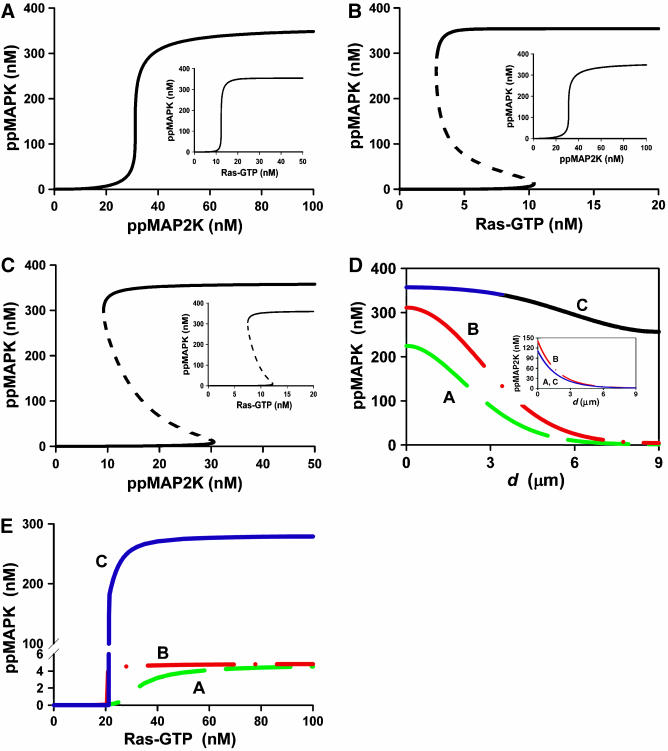Figure 1.
Spatial propagation of MAPK activation for the three different feedback designs and input–output relationships of MAPK cascades. (A) Ultrasensitive steady-state dependence of ppMAPK on the active MAP2K (ppMAP2K). The stationary dependence of ppMAPK on Ras-GTP is shown in the inset. (B) Hysteresis in the MAPK response to Ras stimulation brought about by a positive feedback from ppMAPK to Ras/MAP3K. The kinetic parameters of the MAPK cycle are the same as for panel A. The corresponding stationary dependence of ppMAPK on ppMAP2K is shown in the inset. (C) Bistable dependence of bisphosphorylated ERK (ppMAPK) on active MEK (ppMAP2K). (D) Stationary spatial profiles of ppMAPK and ppMAP2K (inset to panel D) across the cell diameter for three different stimulus–response dependencies shown in panels A–C. (E) The dependences of the stationary ppMAPK level at the nuclear membrane on the magnitude of sustained Ras signal at the PM. In panels D and C, dashed (green), dashed-dot (red) and solid (blue) lines correspond to three different feedback designs A–C. See Tables I, II and III for the differential equations and parameters.

